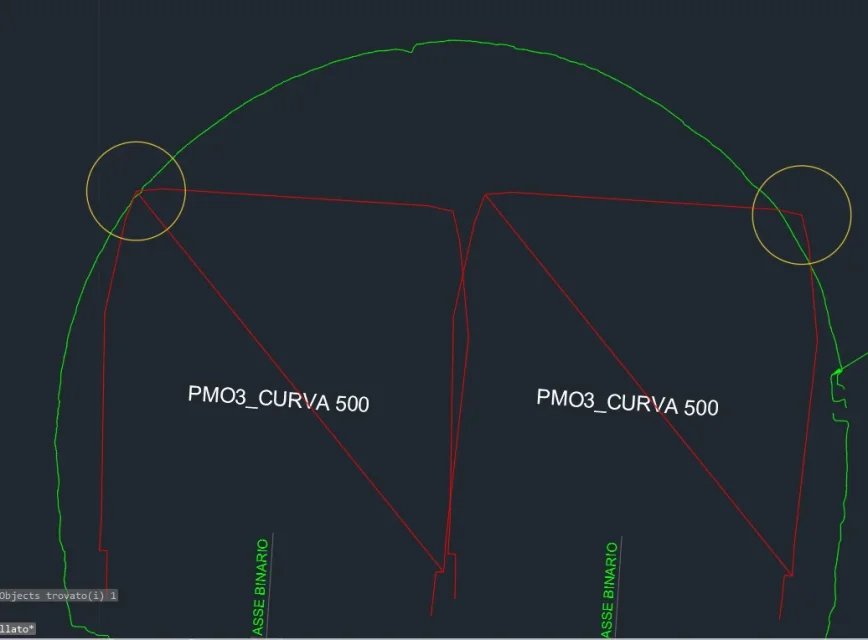Ale3397
Guest
hi to all, I need your help to try to automate the following procedure on autocad:
I need to know about each section of a gallery (even more than 1000) the distance between the train silhouette and the tunnel cap (dx and sx side) in order to be able to obtain this data in a table form. you allego screen:in both sides of intersection between the green 3d polylinea and the block of the train silhouette in red.
I ask you therefore if through the use of a lisp I can get the value of this distance either equal to 0 or different from 0, it would be perfect to read a quota in these points, then to exploit the data field to be inserted in a table and export it to excel.
if you have other tips on how to speed up work are well accepted!!! Thank you
I need to know about each section of a gallery (even more than 1000) the distance between the train silhouette and the tunnel cap (dx and sx side) in order to be able to obtain this data in a table form. you allego screen:in both sides of intersection between the green 3d polylinea and the block of the train silhouette in red.
I ask you therefore if through the use of a lisp I can get the value of this distance either equal to 0 or different from 0, it would be perfect to read a quota in these points, then to exploit the data field to be inserted in a table and export it to excel.
if you have other tips on how to speed up work are well accepted!!! Thank you

